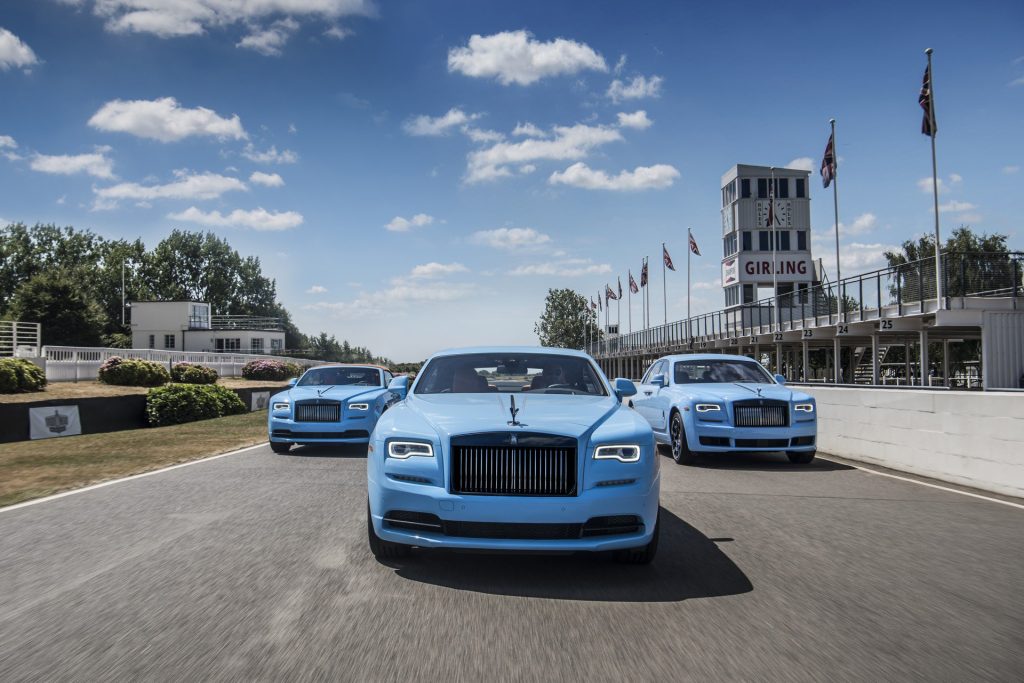Unlocking Luxury: A Deep Dive into Rolls Royce Share Price Trends and Future Prospects

The allure of Rolls Royce transcends mere engineering; it embodies luxury, status, and unmatched craftsmanship. As the iconic marque navigates the ever-evolving automotive landscape, investors and enthusiasts alike are keen to understand the nuances of Rolls Royce share price trends. In this article, we embark on a comprehensive exploration of the factors influencing its market performance, from global economic shifts to evolving consumer preferences. We’ll dissect historical data and emerging patterns to shed light on what the future may hold for this legendary brand.
As we unlock the intricacies behind its share price dynamics, prepare to discover how Rolls Royce not only represents a symbol of excellence but also positions itself as a profitable investment opportunity in the luxury sector. Join us on this journey to uncover the secrets behind Rolls Royce’s financial trajectory and gain insights that could shape your investment strategy.
Understanding rolls royce share price Trends: Key Metrics and Indicators
Rolls-Royce’s share price movements reflect a mix of technical and fundamental metrics. Key indicators include price-to-earnings (P/E) ratios (27.85 as of 2025), price-to-book (P/B) ratios (-71.27), and return on assets (ROA) (7.59%)。 Analysts often track moving averages (e.g., 50-day and 200-day) to identify trends, while Bollinger Bands help gauge volatility. For Rolls-Royce, rising institutional ownership and dividend yields (0.73%) signal long-term confidence, but negative P/B ratios highlight historical debt challenges.
Additionally, volume analysis plays a role: spikes in trading activity often precede price shifts. For example, Rolls-Royce’s 2024 rebound aligned with surging volume after its aerospace division secured major contracts.
Historical Overview of Rolls-Royce Share Prices
Rolls-Royce shares have weathered significant volatility. Between 2020–2023, the stock plummeted 60% due to pandemic-driven aviation declines. However, restructuring efforts, including divesting non-core assets and focusing on sustainable technologies, spurred a 120% recovery from 2023–2025. Notably, its 2025 Q1 earnings report showed a 9.2% EBITDA increase, lifting shares to a 10-year high.
Historical patterns reveal cyclicality tied to aerospace demand. For instance, the 2024 Euronaval trade fair boosted shares by 15% after Rolls-Royce unveiled its mtu Series 4000 submarine engine.
Factors Influencing Rolls-Royce Share Prices
1. Aerospace Demand: Civil and defense aviation contribute 60% of revenue. Post-pandemic travel recovery and increased defense spending (e.g., NATO contracts) drove growth.
2. Debt Management: Rolls-Royce reduced net debt by ?2B in 2024, improving investor sentiment.
3. Energy Transition: Investments in hydrogen and electric aviation (e.g., ACCEL program) position it as a sustainability leader.
4. Macro Risks: Rising interest rates and oil prices threaten margins, while geopolitical tensions boost defense-related revenue.
Market Analysis: Comparing Rolls-Royce with Competitors
Rolls-Royce dominates aircraft engines but faces competition:
General Electric (GE): Strong in commercial aviation but lags in defense.
Siemens Energy: A leader in power systems but less diversified.
Tesla: Competing in electric aviation R&D but lacks Rolls-Royce’s engineering legacy.
Rolls-Royce’s P/E ratio (27.85) exceeds Siemens (18.2) and GE (22.5), reflecting higher growth expectations. However, its debt-to-equity ratio (-71.27) remains a concern compared to peers.
Economic Trends Impacting Luxury Automobile Stocks
While Rolls-Royce Motors (owned by BMW) isn’t publicly traded, broader luxury auto trends affect investor sentiment:
Recession Resilience: High-net-worth consumers buffer luxury brands from economic downturns.
Electrification: BMW’s 2025 electric Rolls-Royce models could tap into the $118B EV market.
Supply Chain Costs: Semiconductor shortages and tariffs squeezed margins industry-wide in 2024.
Future Prospects: Expert Predictions and Analyst Insights
Analysts project a 12–15% annual EPS growth for Rolls-Royce through 2027, driven by:
Defense Contracts: $4B in new orders for submarine engines.
Sustainable Aviation: Partnerships with Airbus for hydrogen-powered engines.
Dividend Growth: Payouts expected to double by 2026 as cash flow stabilizes.
JPMorgan cites a $15 price target (+44% upside), while Goldman Sachs warns of overvaluation risks if interest rates climb.
The Role of Innovation and Sustainability in Share Price Growth
Rolls-Royce’s R&D focus on zero-emission aviation (e.g., Spirit of Innovation EV plane) aligns with global decarbonization goals. Its Power Systems division aims to derive 30% of revenue from renewables by 2030. These initiatives enhance ESG ratings, attracting $2.3B in green investment since 2023.
Investment Strategies for Rolls-Royce Stocks
1. Long-Term Hold: Capitalize on aerospace recovery and defense growth.
2. Dollar-Cost Averaging: Mitigate volatility by buying dips (e.g., during oil price spikes)。
3. Sector Diversification: Balance with non-cyclical stocks (utilities, healthcare)。
4. Monitor Catalysts: Watch for updates on electric aviation trials and NATO contracts.
Conclusion: Navigating the Future of Rolls-Royce Investments
Rolls-Royce offers high-reward potential but carries cyclical and debt-related risks. Investors should prioritize diversification, track aerospace demand trends, and stay alert to sustainability milestones. With strategic innovation and disciplined debt management, Rolls-Royce is poised to outperform in the green industrial era.